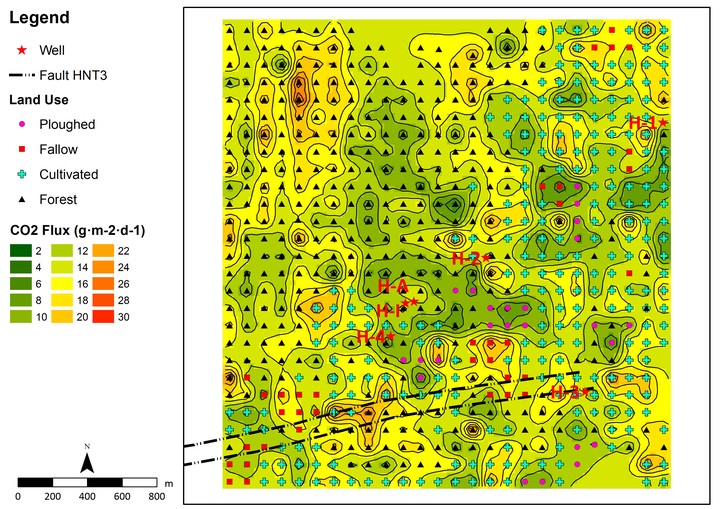CO2 soil flux baseline at the technological development plantfor CO2injection at Hontomin (Burgos, Spain)

Abstract
From the end of 2013 and during the following two years, 20 kt of CO2sc are planned to be injected in a saline reservoir (1500 m depth) at the Hontomín site (NE Spain). The target aquifers are Lower Jurassic limestone formations which are sealed by Lower Cretaceous clay units at the Hontomín site (NE Spain). The injection of CO2 is part of the activities committed in the Technology Development phase of the EC-funded OXYCFB300 project (European Energy Program for Recovery – EEPR, http://www.compostillaproject.eu), which include CO2 injection strategies, risk assessment, and testing and validating monitoring methodologies and techniques.
Among the monitoring works, the project is intended to prove that present-day technology is able to monitor the evolution of injected CO2 in the reservoir and to detect potential leakage. One of the techniques is the measurement of CO2 flux at the soil–atmosphere interface, which includes campaigns before, during and after the injection operations.
In this work soil CO2 flux measurements in the vicinity of oil borehole, drilled in the eighties and named H-1 to H-4, and injection and monitoring wells were performed using an accumulation chamber equipped with an IR sensor. Seven surveys were carried out from November 2009 to summer 2011. More than 4000 measurements were used to determine the baseline flux of CO2 and its seasonal variations.
The measured values were low (from 5 to 13 g m−2 day−1) and few outliers were identified, mainly located close to the H-2 oil well. Nevertheless, these values cannot be associated to a deep source of CO2, being more likely related to biological processes, i.e. soil respiration. No anomalies were recognized close to the deep fault system (Ubierna Fault) detected by geophysical investigations. There, the CO2 flux is indeed as low as other measurement stations. CO2 fluxes appear to be controlled by the biological activity since the lowest values were recorded during autumn-winter seasons and they tend to increase in warm periods. Two reference CO2 flux values (UCL50 of 5 g m−2 d−1 for non-ploughed areas in autumn–winter seasons and 3.5 and 12 g m−2 d−1 for in ploughed and non-ploughed areas, respectively, in spring–summer time, and UCL99 of 26 g m−2 d−1 for autumn–winter in not-ploughed areas and 34 and 42 g m−2 d−1 for spring–summer in ploughed and not-ploughed areas, respectively) were calculated. Fluxes higher than these reference values could be indicative of possible leakage during the operational and post-closure stages of the storage project.